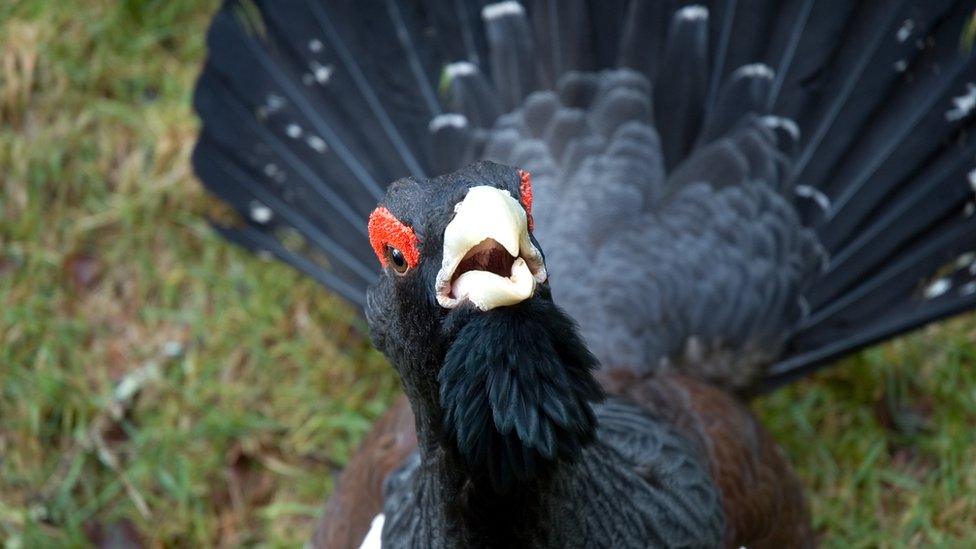Park plea to visitors to stay away from capercaillie
- Published

Capercaillie are the world's largest grouse
Visitors to the Cairngorms have been asked to be aware of the potential risks they pose to Scotland's largest ground-nesting bird.
The area's pine forests are home to about 80% of the UK's small and fragile population of capercaillie.
The turkey-sized grouse, whose breeding season has just begun, are sensitive to disturbance.
With Covid travel limits due to relax on Friday, the Cairngorms are expected to be popular with day trippers.
The Cairngorms National Park Authority (CNPA) said visitor numbers "surged" following the end of last year's lockdown, with hundreds of people drawn the area's mountains, forests and lochs.
Habitat loss and fatal collisions with deer fences have been blamed for the decline of capercaillie numbers in Scotland
To help protect capercaillie and other ground-nesting birds, CNPA has asked visitors to stick to waymarked paths and keep dogs on leads.
The park - which includes parts of the Highlands, Moray, Aberdeenshire and Perthshire - has warning signs where capercaillie are known, and more advice and information on capercaillie is available on the Cairngorms Capercaillie Project website, external.
Capercaillie are the largest grouse species in the world. In Scotland there are estimated to be fewer than 1,000 capercaillie.
Habitat loss and fatal collisions with deer fences have reduced their numbers.